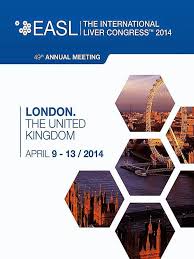 HBF is pleased to connect our blog readers to Christine Kukka’s monthly HBV Journal Review that she writes for the HBV Advocate. The journal presents the
latest in hepatitis B research, treatment, and prevention from recent academic and medical journals. This month, the following topics are explored:
HBF is pleased to connect our blog readers to Christine Kukka’s monthly HBV Journal Review that she writes for the HBV Advocate. The journal presents the
latest in hepatitis B research, treatment, and prevention from recent academic and medical journals. This month, the following topics are explored:
- Adding Interferon to Ongoing Antiviral Treatment Is Highly Successful
- Vitamin E Helps HBV-Infected Children Lose HBeAg, Reducing Liver Damage
- Common Chinese Toad May Hold the Key to Preventing and Treating Liver Cancer
- Even at Top Hospitals, Doctors Fail to Treat Hepatitis B Patients Properly
- Study Finds Doctors More Likely to Treat Hepatitis B in Men Than Women
- Study Confirms Doctors Frequently Fail to Screen and Vaccinate Those at Risk
- Antiviral Treatment Dramatically Improves Liver Cancer Test Accuracy
- $50 Cash Incentive Increases HBV Immunization 12-Fold
- Hepatitis B and C Cause Ten-Times More Deaths Than HIV in Europe
HBV Journal Review
May 1, 2014
Volume 11, Issue 5
by Christine M. Kukka
Adding Interferon to Ongoing Antiviral Treatment Is Highly Successful
Adding pegylated interferon to ongoing antiviral treatment produced remarkable rates of hepatitis B “e” antigen (HBeAg) loss and even hepatitis B surface antigen (HBsAg) loss, according to a study presented at the International Liver Congress held in London in April.
Eighty-three HBeAg-positive patients in China, who had been on antivirals for more than two years, had 48 weeks of interferon treatment added to their treatment regimen. A control group continued on only antivirals:
- 60% of the group treated with add-on interferon lost HBeAg and their viral loads dropped below 2,000 IU/mL. In contrast, only 13.8% of patients treated with only antivirals achieved those benchmarks.
- 27.7% of patients in the combination treatment group lost HBsAg. No one in the antiviral group lost HBsAg.
- All patients who had low HBsAg levels (less than 1,000 IU/mL) at the start of interferon treatment achieved HBeAg loss and 91% cleared HBsAg.
” Sequential combination therapy of (antivirals) and pegylated interferon effectively resulted in high rates of complete response and HBsAg loss in patients with prior long-term exposure to (antivirals),” researchers wrote. (Abstract 0117)
Another study exploring the benefits of sequential antiviral and interferon treatment found that HBeAg-positive patients who had been on antivirals for three years or longer also experienced high rates of HBeAg loss and development of “e” antibodies (HBeAg seroconversion) when their antivirals were replaced with pegylated interferon.
At week 48, the HBeAg seroconversion rate in the interferon-treated group was 66.67% compared to 2.5% in the antiviral group. (Abstract P1071)
A third study from India also found notable improvements when pegylated interferon was added to ongoing tenofovir treatment. Sixty patients were treated with tenofovir for 12 weeks (300 mg daily), then:
- One group had pegylated interferon added to the ongoing tenofovir regimen for 24 weeks, and then were followed for another 28 weeks.
- The other half continued their tenofovir treatment for 52 weeks.
Sixty percent of the interferon-plus-tenofovir group achieved healthy liver health, with normal alanine aminotransferase (ALT) levels, compared to 30% in the tenofovir-only group. The combination-treatment group also experienced greater viral load (HBV DNA) declines and HBeAg seroconversion (53.3% vs. 23.3% in the antiviral-only group).
“Sequential therapy using tenofovir and pegylated interferon may provide rapid and high biochemical and virological response in selected HBeAg-positive patients,” researchers noted. “Long-term clinical trials are needed to assess (the) sustained durable response.” (Abstract P1092)
Source: www.hbvadvocate.org/EASL_2014_
Abstracts.pdf
Vitamin E Helps HBV-Infected Children Lose HBeAg, Reducing Liver Damage
A small study, presented at the 2014 Liver Congress found that HBeAg-positive children who were treated with vitamin E (15 mg/kg/daily) for 12 months achieved higher rates of HBeAg conversion, lower viral loads and normal ALT levels than did untreated children.
Continue reading the HBV Journal Review…




